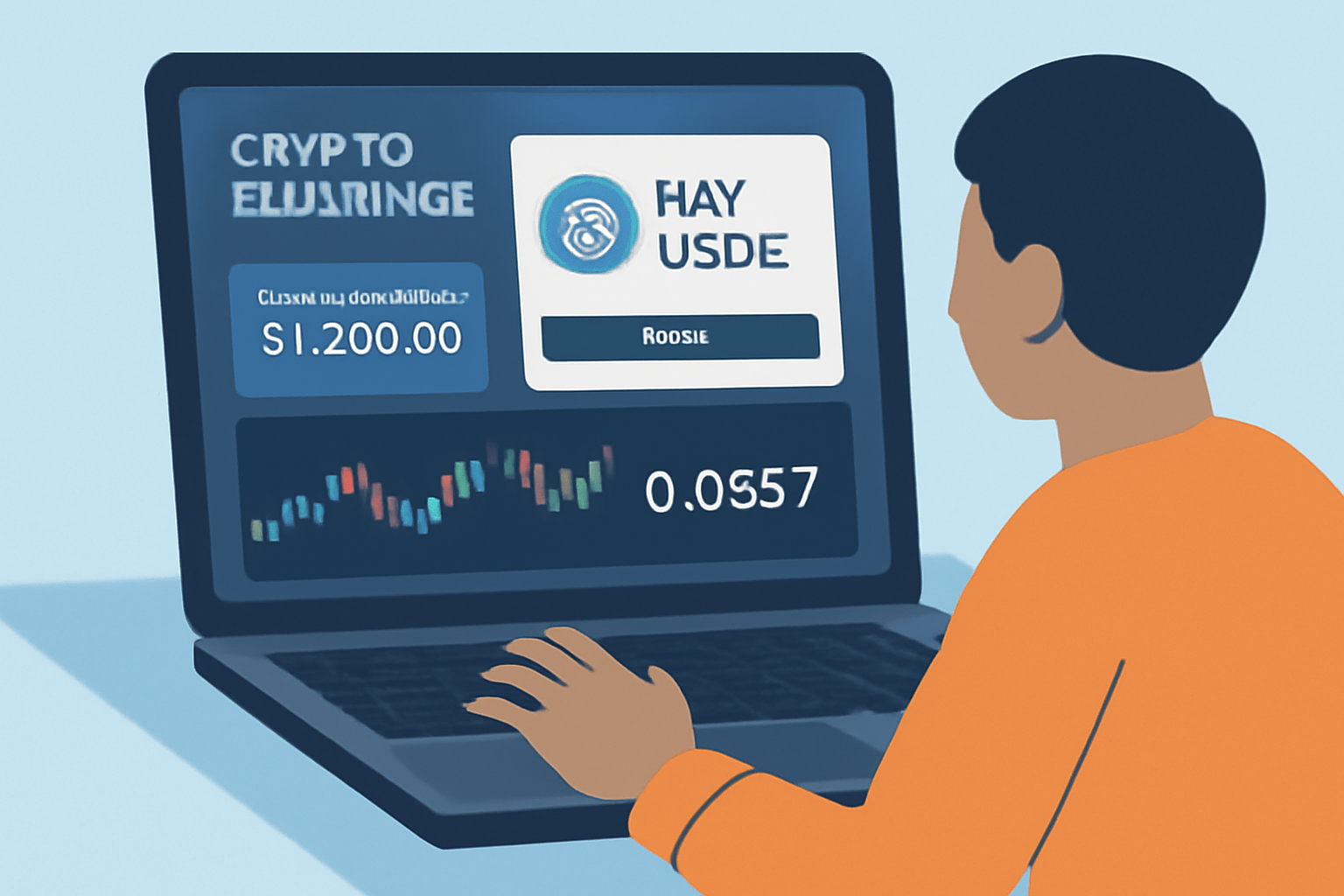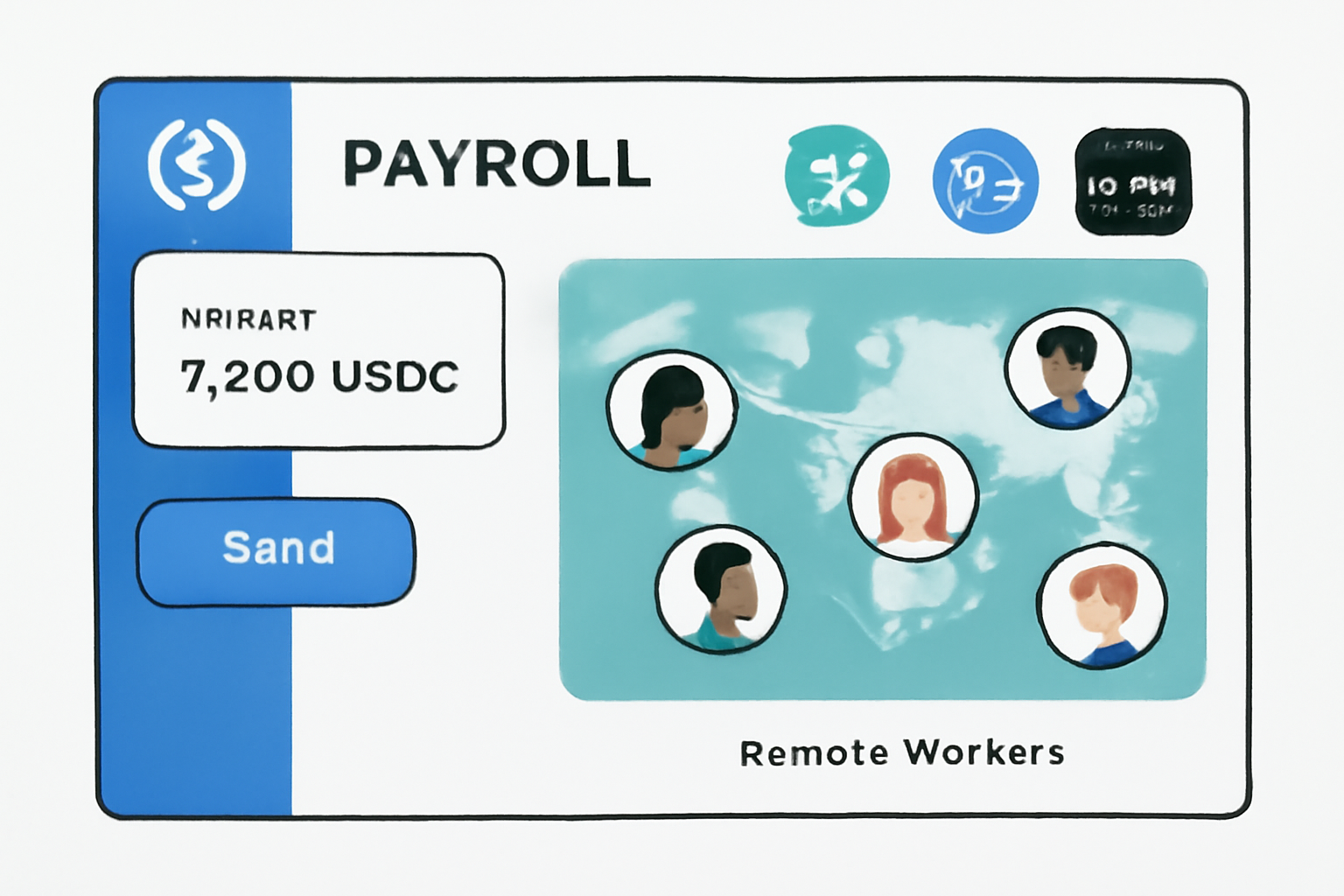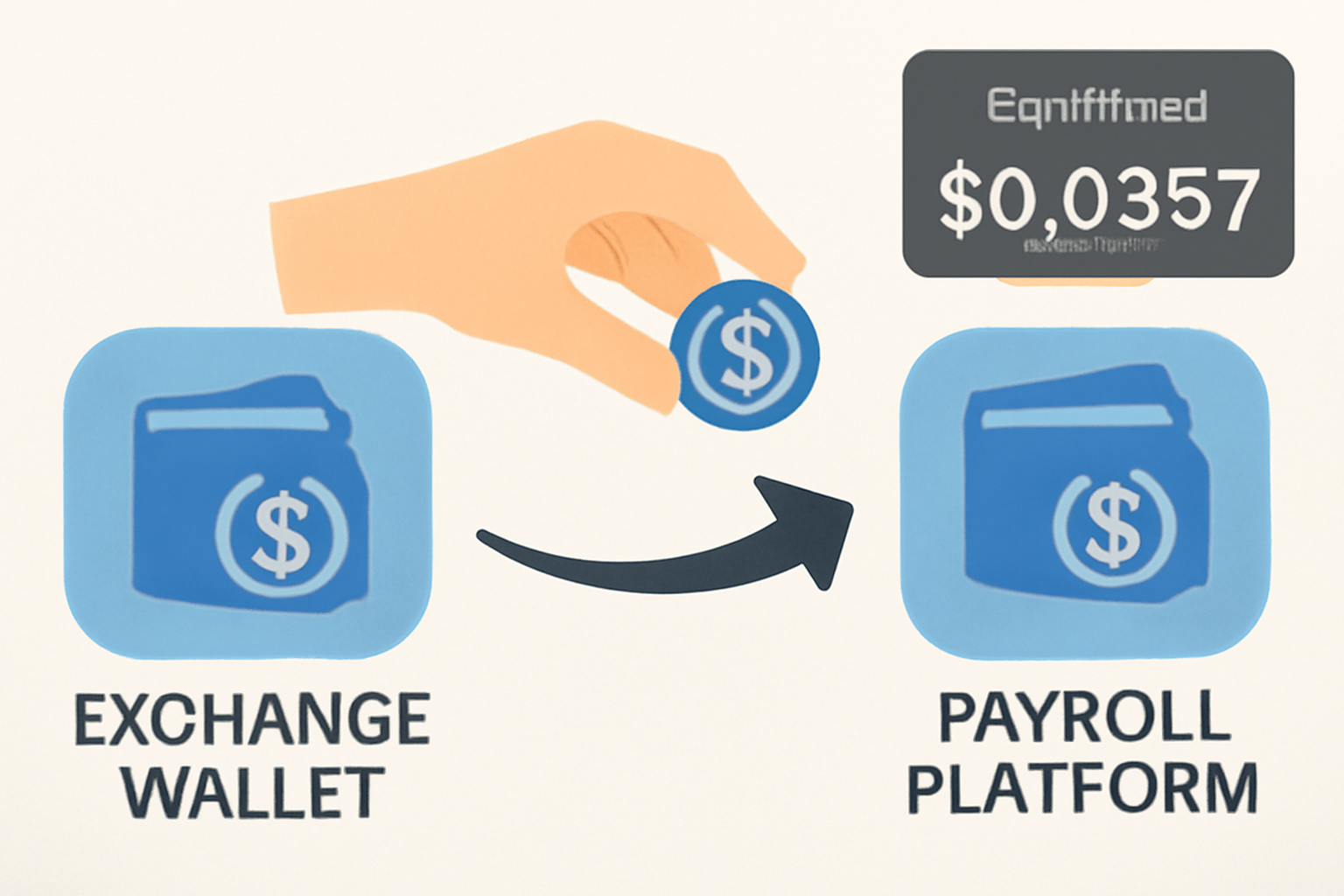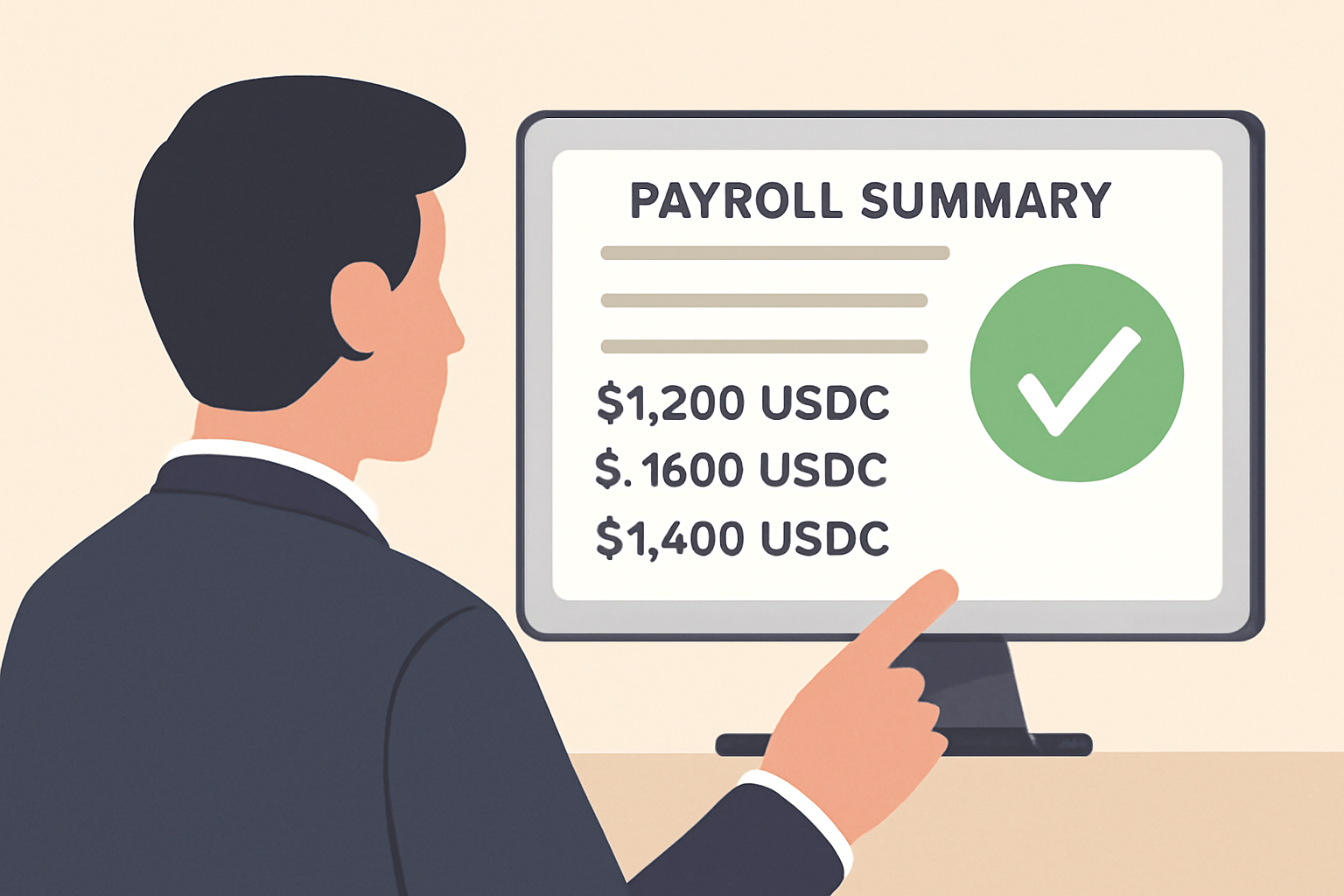
As global startups scale across borders, the need for efficient, compliant, and transparent payroll solutions has never been greater. USDC (USD Coin), a fully reserved stablecoin pegged to the US dollar, is rapidly becoming the preferred vehicle for cross-border payroll. With its current market price at $0.0357 as of October 29,2025, USDC offers startups a reliable way to pay remote employees without the volatility of traditional cryptocurrencies.
But how do you actually implement a USDC payroll system from scratch? The process can seem daunting given regulatory requirements and technical considerations. This guide breaks down each step, drawing on best practices from innovative platforms and real-world case studies.
Why Startups Are Turning to USDC Payroll in 2025
The international workforce is more distributed than ever. Traditional banking rails are slow, expensive, and often exclude key markets. In contrast, USDC payroll enables near-instant salary payments that bypass banking barriers entirely. Platforms like Remote have integrated with Stripe to support compliant USDC payouts in nearly 70 countries. Bitwage’s adoption of USDC on Stellar further underscores this trend, offering low-cost transactions that settle in minutes rather than days.
Stablecoins like USDC are gaining traction not just for their speed but for their transparency and auditability, critical factors for compliance-driven founders and finance teams. According to recent data from Binderr and Lano. io, startups using stablecoin salary payments report reduced transaction fees, enhanced payment tracking, and improved employee satisfaction due to timely compensation.
The Essentials: What You Need Before Paying Remote Teams in USDC
Preparation is paramount. Before sending your first stablecoin salary payment, ensure your company is equipped with these core elements:
- A corporate crypto wallet: Choose between custodial (e. g. , Coinbase) or self-custodied options based on your team’s technical expertise and compliance needs.
- KYC/AML procedures: Implement robust identity verification for both your company and recipients to stay aligned with local regulations.
- Payroll platform integration: Leverage platforms that natively support USDC, such as Remote or Rise, for streamlined bulk payments and reporting features.
- Employee consent: Secure written agreement from employees or contractors opting into crypto payroll. This is not just best practice, it’s often a legal requirement.
- A clear tax strategy: Consult with global tax professionals to understand reporting obligations in each jurisdiction where you employ talent.
If you’re ready for a more detailed walkthrough of this setup process, including wallet creation, funding methods via exchanges like Binance or Coinbase, and compliance checkpoints, see our deep dive at this step-by-step guide for tech startups.
A Practical Walkthrough: Paying Remote Employees with USDC at $0.0357
The mechanics of paying remote teams in USDC are surprisingly straightforward when broken down systematically. Here’s how leading-edge companies are executing global crypto payroll today:
You’ll start by transferring funds into your designated corporate wallet, either directly from an exchange or via OTC providers if moving larger sums. From there, most platforms allow you to upload recipient addresses in bulk along with payment amounts denominated in either USD or local currency equivalents (automatically converted at the current rate). The result? Employees receive their salaries immediately into their own wallets at the precise value agreed upon, no intermediary banks required.
This approach isn’t just about speed; it’s about unlocking access for talent worldwide who may be unbanked or underserved by legacy systems. For more on how stablecoins are revolutionizing cross-border payroll models, and why compliance-first startups are leading this shift, see our related analysis at how stablecoins like USDC are revolutionizing cross-border payroll.
Once your payroll infrastructure is in place, the ongoing management of USDC salary payments becomes a matter of process discipline and compliance vigilance. Regularly reconcile your corporate wallet, track all outgoing transactions, and maintain up-to-date records for each pay cycle. This transparency is not only a core benefit of blockchain-based payroll but also a practical necessity for audits and regulatory reporting.
Mitigating Risks: Compliance, Volatility, and Employee Education
While USDC’s price stability ($0.0357 as of October 29,2025) helps eliminate most volatility risk, startups must still navigate compliance hurdles. Establish clear policies around anti-money laundering (AML) and know-your-customer (KYC) obligations. Many jurisdictions require explicit documentation and reporting for crypto payroll, failure to comply can result in fines or lost banking relationships.
Employee education is equally important. Not all remote workers are familiar with the nuances of stablecoins or wallet security. Provide onboarding resources that explain how to receive, store, and convert USDC into local currency if desired. Some platforms even offer automatic off-ramps to fiat, further smoothing the employee experience.
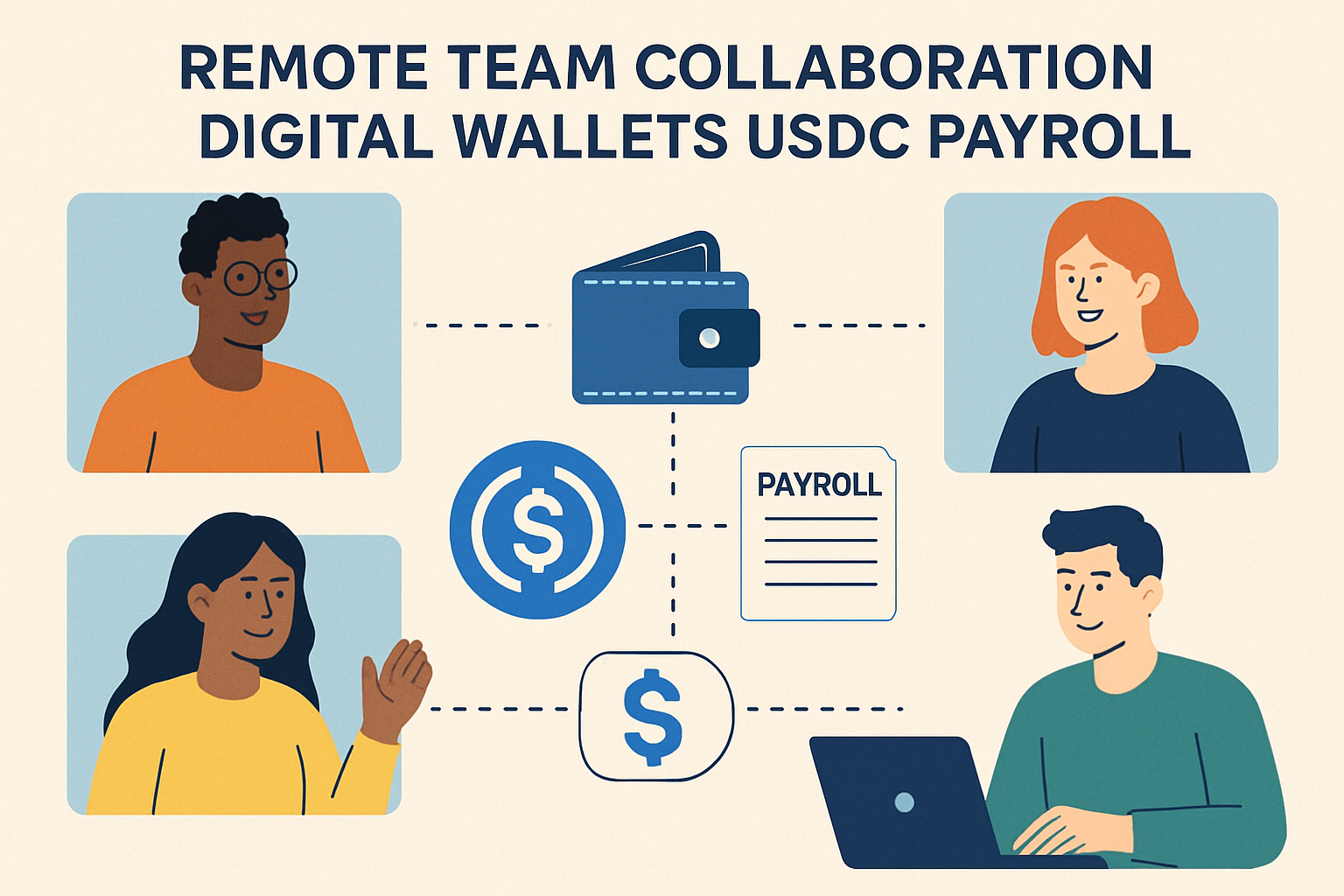
Best Practices for Sustainable Global Crypto Payroll
- Automate recurring payments: Use payroll platforms with built-in scheduling to reduce manual errors and ensure timely salary distribution.
- Monitor market rates: Even with stablecoins like USDC, cross-chain bridges can introduce minor discrepancies; always verify current rates before large transfers.
- Stay updated on regulations: Crypto payroll law evolves rapidly, subscribe to trusted legal bulletins or partner with compliance-focused providers.
- Create emergency protocols: Have contingency plans if wallets are compromised or exchanges experience downtime.
The right workflow balances automation with human oversight. For more tactical guidance on navigating these best practices in emerging markets, see our resource on paying remote employees in emerging markets using USDC payroll.
The Future Outlook: Why USDC Payroll Is Here to Stay
The adoption curve for stablecoin salary payment is accelerating as both employers and employees recognize the operational advantages over legacy systems. With major platforms now supporting compliant USDC payouts in dozens of countries, and real-time settlement at precisely $0.0357 per token, global startups are positioned to attract top talent regardless of geography.
This isn’t just an efficiency play; it’s a strategic lever for growth-stage companies seeking agility in an increasingly borderless economy. As regulatory clarity improves and integrations deepen across fintech ecosystems, expect stablecoin-powered payroll to become a default option rather than an outlier.
“Patience pays dividends, ” but so does innovation, especially when it comes to empowering your workforce with frictionless global payments.



